#Highlands of Himalayan Region
Text
Pleasure in Lidder Valley
By Syed Salman
“Gar firdous bar-ruhe zamin ast, Hamin asto hamin ast“.
Perhaps because of the fame of Himalayas and the love for trekking, Pahalgam has always been, to me, a strenuous grill. It is one of those places you really should visit with a backpack,and go with the firm intention of getting some good healthy exercise, trudging uphill and down dale.
But then, Pahalgam is also one of the…

View On WordPress
#Adventure Valleys#Amarnath Cave#Aru on banks of Lidder#Beautiful Trek#Black Pines#Capture Beauty of Nature#Enchanting places on the Earth#Excellent Views of Nature#Flora and Fauna#Heaven on Earth#Highlands of Himalayan Region#Hiking area#Kashmir#Kashmir wazwan#Kashmiri shawls#Kolhai Glacier#Lidder river#Lidder Valley#Pahalgam Valley#Persian Poet&039;s couplets#Pine Forests
0 notes
Photo

There are two phases of enjoyment in journeying through an unknown country - the eager phase of wondering interest in every detail, and the relaxed phase when one feels no longer an observer of the exotic, but a participator in the rhythm of daily life.
- Dervla Murphy
There are few better literary gatherings than the Immrama Travel Writing festival in Lismore, County Waterford. Huddled quietly on the banks of the River Blackwater at the base of the Knockmealdown Mountains, Lismore is a scenic enough spot but on the face of it an unlikely magnet for the global travel writing community. Yet for two decades a string of stellar travellers including Michael Palin, Jan Morris, Paul Theroux, Kate Adie, Ranulph Fiennes, Terry Waite and Pico Iyer have made pilgrimages to this small rural town three hours south-west of Dublin to share their stories.
What draws notable itinerants from around the world to this rural backwater on the fringe of Europe is the special status it holds for writers and lovers of travel literature. Lismore was the hometown of the remarkable Dervla Murphy, who died on 22 May 2022 at the age of 90.
Here are six must-read books by one of Ireland’s greatest travel writers and explorers. They are all in print and currently available from Eland Publishing, one of my favourite publishing houses of travel writers and explorers, past and present.
1. Full Tilt: Ireland to India with a Bicycle (1965)
Dervla’s debut recounts an epic ride to India. Setting out from Lismore in 1963, she travelled via Europe, Iran, Afghanistan and Pakistan on her trusty bicycle, named Roz, facing 50ft snowdrifts in the Turkish highlands and some punishing pedalling through the heat of the Himalayan summer.
2. Where the Indus Is Young (1977)
A vivid travelogue detailing Dervla’s somewhat extreme winter hiking trip through Baltistan, in the northern Kashmir region, battling temperatures that dipped to minus 20C. She was accompanied by her daughter, Rachel, then aged six; the only person Dervla ever deigned to travel with.
3. A Place Apart (1978)
At the height of the Troubles, aiming to put aside the sectarian loyalties that might have come from her own family connections to the IRA, Dervla cycled to Northern Ireland to try to unpick the situation, creating a travelogue that features revealing interviews and exchanges with locals on both sides of the divide.
4. Wheels Within Wheels (1979)
In the autobiography that followed seven travel books, Dervla notes: “Even at 16, I had a strong premonition that I would never marry. Possibly the predictability of the average marriage put me off; it was the antithesis of my ideal unplanned existence - travelling, writing, not knowing what was going to happen next year or next month or even next week.”
5. Through Siberia by Accident (2006)
Due to a painful leg injury, Dervla had to rethink her planned trip to Ussuriland, a Russian outpost free of anything remotely touristic, to explore the vast territories of Siberia instead. There she found humbling hospitality and generosity from local hosts during a journey of self-discovery and contradiction - human warmth and kindness against a bleak, unforgiving backdrop.
6. A Month by the Sea: Encounters in Gaza (2013)
Over the summer of 2011, in her 80th year, Dervla spent a month in the Gaza Strip in Palestine. Described by Irish novelist Colm Tóibín as a “a wake-up call to the world”, Dervla’s determination to understand how Arab Palestinians and Israeli Jews might find resolution gives voice to those rarely heard in the region and offers a unique insight into a place shaped by isolation.
#dervla murphy#murphy#quote#books#travel#reading#explorer#exploration#writer#irish#icon#femme#ireland
18 notes
·
View notes
Text



W. H. Murray was born on March 18th 1913 in Liverpool.
Murray may not be Scottish by birth but he is credited with being one of the great popularisers of mountain climbing in Scotland in the 20th century, especially because of his inspirational books on the subject. He was also brought up here.
Always known as Bill to his friends and WH in his professional career, Murray was born to a Scot of the same name and his wife Helen nee Robertson. WH Murray senior was an inspector of mines who joined the Royal Marines as a sapper and was killed at Gallipoli when his son was just two.
His mother relocated Murray and his elder sister to Glasgow and he was educated at Glasgow Academy, where he excelled at English.
Instead, he joined the Union Bank of Scotland in Glasgow and studied for four years to become a qualified banker. He had always been a voracious reader and his real ambition was to be a full-time writer.
At the age of 19 he overheard a conversation in which a climber described his traverse of An Teallach in Wester Ross, and after researching the subject, in April, 1934, he set off by train for the nearest mountain whose name he knew – The Cobbler, or Ben Arthur, near Arrochar.
This he climbed by himself in a wintry April, and without maps, proper clothing or equipment, spending many minutes at he summit. As he recalled in his book Undiscovered Scotland: “I never dreamed that my own country held wild land so vast. From that day I became a mountaineer.”
At the outbreak of World War II he enlisted in the Argyll and Sutherland Highlanders and saw action in the Middle East and North Africa, but was captured by a German Panzer division in Egypt in 1942. A passage in Mountain magazine from 1979 describes the moments after his capture:
To my astonishment, he [the German tank commander] forced a wry smile and asked in English, ‘Aren’t you feeling the cold?’ … I replied 'cold as a mountain top’. He looked at me, and his eyes brightened. 'Do you mean – you climb mountains?’ He was a mountaineer. We both relaxed. He stuffed his gun away. After a few quick words – the Alps, Scotland, rock and ice – he could not do enough for me.
He saw out the war in camps in Italy, Germany and Czechoslovakia and it was in these camps he started writing, paper was in short supply and he used the only paper available to him – rough toilet paper supplied by The Red Cross. The manuscript was found and destroyed by the Gestapo. To the incredulity of his fellow prisoners, Murray’s response to the loss was to start again, despite the risk of its loss and that his physical condition was so poor from the near starvation diet that he believed he would never climb again. The rewritten work was finally published in 1947, Mountaineering in Scotland and it’s follow up Undiscovered Scotland were best sellers and have an honoured place on the bookshelves of many enthusiasts.
Incarceration left its mark on many PoWs, but Bill Murray continued the activity he loved and in 1950 led expeditions to Garhwal and Almora in the Himalayas. He was deputy leader on the reconnaissance of Everest in 1951, but difficulties in acclimatising to the altitude excluded him from the successful assault by Edmund Hillary and Sherpa Tenzing on the world’s highest peak in 1953.
In later life he wrote extensively - guidebooks, works of topography, magazine articles and fiction. He was awarded the Mungo Park Medal of the Royal Scottish Geographical Society in 1953, his work includes The Scottish Himalayan Expedition, Glencoe, Blackmount and Lochaber : a regional guide, Companion Guide to the Western Highlands of Scotland and Rob Roy MacGregor – His Life and Times, as well as several works of fiction
W.H. Murray played an increasingly important role in issues to do with the environment of Scotland from the 1960s onwards. In 1960 he surveyed Scotland’s mountain areas for the National Trust for Scotland, and he served on the Countryside Commission for Scotland from 1968 to 1980. He was also Chairman of the Scottish Countryside Activities Council from 1968 to 1982; President of the Mountaineering Council for Scotland from 1972 to 1975; President of the Scottish Mountaineering Club from 1962, and Honorary President of it from 1989; and a founding Trustee of the John Muir Trust until 1986.
His autobiography, The Evidence of Things Not Seen: A Mountaineer’s Tale, was completed on his death by his wife Anne, he passed away on March 19th 1996 a day after his 83rd birthday.
5 notes
·
View notes
Text

"Discover the Beauty of India's Northeast: The Seven Sisters of India"
Nestled in the far-eastern corner of India, the Northeast region is a mesmerizing and culturally diverse paradise waiting to be discovered. Comprising eight states—Arunachal Pradesh, Assam, Manipur, Meghalaya, Mizoram, Nagaland, Sikkim, and Tripura—Northeast India offers a unique blend of breathtaking landscapes, rich biodiversity, vibrant festivals, and warm hospitality. In this blog post, we will embark on a journey to explore the uncharted beauty and charm of Northeast India.
1. Assam:
Known as the gateway to Northeast India, Assam is famous for its tea gardens, wildlife sanctuaries, and the mighty Brahmaputra River. Visit the Kaziranga National Park, home to the endangered one-horned rhinoceros, and take a boat ride on the Brahmaputra to witness its grandeur. Don't miss the vibrant Bihu festivals and savor the world-renowned Assam tea.
2. Meghalaya:
Meghalaya, meaning "the abode of clouds," lives up to its name with its lush green landscapes and abundant rainfall. Explore the living root bridges in Cherrapunji and Mawlynnong, the cleanest village in Asia. Discover the enchanting Mawsmai Caves and enjoy the stunning views of waterfalls like Nohkalikai and Seven Sisters. Shillong, the capital city, offers a blend of colonial charm and a thriving music scene.
3. Arunachal Pradesh:
Arunachal Pradesh, the "Land of the Rising Sun," boasts of breathtaking Himalayan landscapes, ancient monasteries, and rich tribal culture. Visit Tawang, home to the famous Tawang Monastery and the beautiful Peng Teng Tso Lake. Explore the Ziro Valley, known for its scenic beauty and the Apatani tribe's unique culture. Don't miss the Namdapha National Park, a biodiversity hotspot.
4. Nagaland:
Nagaland, known for its vibrant tribes and unique festivals, offers a glimpse into the rich Naga heritage. Witness the Hornbill Festival, a grand celebration of Naga culture, in Kohima. Explore the picturesque village of Khonoma, known for its conservation efforts and indigenous traditions. Trek to Dzükou Valley for stunning views and immerse yourself in the warmth of Naga hospitality.
5. Manipur:
Immerse yourself in the natural beauty and rich cultural heritage of Manipur. Visit Loktak Lake, the largest freshwater lake in Northeast India, and explore the unique floating phumdis (islands). Witness the awe-inspiring Ras Lila dance performances at the Govindaji Temple and discover the ancient Kangla Fort in Imphal. Don't miss the Sangai Festival, showcasing Manipuri art, dance, and music.
6. Mizoram:
Mizoram, known as the "Land of the Highlanders," captivates visitors with its rolling hills, cascading waterfalls, and vibrant tribal culture. Explore Aizawl, the capital city, and visit the revered Mizoram State Museum. Trek to the breathtaking Phawngpui Blue Mountain, the highest peak in Mizoram, and witness the grandeur of the Palak Wildlife Sanctuary.
7. Tripura:
Discover the hidden treasures of Tripura, the land of legendary palaces and captivating landscapes. Visit the magnificent Ujjayanta Palace in Agartala and the ancient Neermahal Palace, located amidst the tranquil Rudrasagar Lake. Explore the rich archaeological sites of Unakoti and witness the vibrant Tripuri dance forms during the Kharchi Festival.
8. Sikkim:
Though a part of Northeast India, Sikkim deserves special mention for its pristine beauty and spiritual significance. Explore the capital city of Gangtok, visit the Rumtek Monastery, and enjoy the breathtaking views of the Himalayas. Discover the magical Yumthang Valley, Tsomgo Lake, and the ancient Pemayangtse Monastery.
9. Tripura Sundari Temple, Tripura:
Located in the ancient city of Udaipur in Tripura, the Tripura Sundari Temple is a significant pilgrimage site and architectural marvel. Dedicated to the goddess Tripura Sundari (a form of Goddess Durga), this temple showcases exquisite craftsmanship and intricate carvings. The temple's unique architectural style and the serene surroundings add to its spiritual aura. Visitors can participate in religious rituals, witness colorful festivals, and soak in the divine atmosphere of this revered temple.
10. Dzukou Valley, Nagaland-Manipur Border:
Nestled on the border of Nagaland and Manipur, Dzukou Valley is a hidden gem known for its untouched natural beauty. Often referred to as the "Valley of Flowers of the Northeast," Dzukou Valley is a paradise for trekkers and nature enthusiasts. The valley comes alive with a vibrant carpet of wildflowers, including lilies, rhododendrons, and orchids, during the spring season. The picturesque trek to Dzukou Valley offers breathtaking views of rolling hills, cascading streams, and lush green landscapes. Camping in the valley and witnessing the awe-inspiring sunrise and sunset vistas is a truly enchanting experience.
Conclusion:
Northeast India, with its untouched beauty, rich cultural heritage, and warm hospitality, offers a unique travel experience. From the misty hills of Meghalaya to the mystical land of Arunachal Pradesh, each state in the region has its own distinct charm. Embark on a journey to Northeast India, and you'll find yourself immersed in a world of breathtaking landscapes, diverse cultures, and unforgettable memories. Prepare to be enchanted by the unexplored paradise of Northeast India.
#north east tour package#north east government tourism packages#north east trip plan#north east family tour packages#north east tour package from mumbai#meghalaya tour package#meghalaya trip#shillong tour#meghalaya tour#meghalaya trip packages#shilling 2 days packages#shillong tour itenerary#north east places to visit#places to visit in north east#north east tourist places#best places to visit in north east#tourist places in north east#best places in north east#north east packages from delhi#north east package from bangalore#north east tourism package#north east india tour package#best tour operator from north east#north east india tourism best time to visit#seven sisters tour packages#top 5 places to visit in north east
1 note
·
View note
Text
Unveiling Bhutan: Trekking the Hidden Gems of the Himalayas in 2024

Nestled in the Eastern Himalayas, Bhutan is a land of stunning natural beauty, rich cultural heritage, and unparalleled trekking experiences. With its lush valleys, towering peaks, and pristine landscapes, a Bhutan trip offers trekkers an unforgettable journey through some of the most spectacular terrains on earth. As 2024 unfolds, adventure seekers are setting their sights on Bhutan, eager to explore its hidden gems. Here’s why a trek in Bhutan should top your travel list this year.
The Snowman Trek: The Ultimate Challenge

Dubbed the hardest trek in the world, the Snowman Trek is not for the faint-hearted. Spanning over 25 days and covering more than 200 miles, this trek takes you through remote regions, high mountain passes, and breathtaking glaciers. Starting from Paro, it traverses through Laya and Lunana before concluding in Bumthang. The physical demands are high, but the rewards—stunning vistas of peaks like Gangkar Puensum and cultural encounters with isolated highland communities—are incomparable. For those seeking the ultimate adventure, the Snowman Trek is one of the most challenging and rewarding things to do in Bhutan.
Druk Path Trek: The Classic Himalayan Experience

For those looking for a shorter yet equally mesmerizing trek, the Druk Path Trek is an excellent choice. This six-day journey connects the valleys of Paro and Thimphu, crossing scenic ridges and alpine forests. Trekkers will experience the serene beauty of high-altitude lakes like Jimilang Tsho and the historic monasteries that dot the landscape. As one of the captivating hill stations in Bhutan, this trek is perfect for beginners and offers a rich blend of natural beauty and cultural heritage.
Conclusion
Trekking in Bhutan is more than just an adventure; it’s a journey into a land where nature and culture coexist in harmony. Each trail offers unique experiences, from the formidable heights of the Snowman Trek to the serene beauty of the Dagala Lakes. As you plan your trekking expedition in 2024, let Bhutan’s hidden gems guide you to an unforgettable Himalayan adventure. Embrace the challenge, soak in the tranquility, and create memories that will last a lifetime.
0 notes
Text
Solo Trip in Kasol
If you like to escape the hustle and bustle of the city and find yourself in the centre of an alpine forest, you're in luck! Kasol, one of the most scenic towns in the Kullu region of Himachal Pradesh, offers a plethora of opportunities for great vacation experiences. It is 36 km away from Bhuntar and 3.5 kilometres away from Manikaran Sahib. The town offers stunning natural beauty and is the starting point for many walks in the Himalayas. With a blend of local culture and a hint of Israeli influence, Kasol provides an experience that is unmatched. The quaint town of Kasol is a well-liked tourist attraction located in the lower Himalayan region of the northwest Indian state of Himachal Pradesh. Travelers get a much-needed break from the heat, noise, and chaos of India's packed cities in the stunning highlands and surrounding valleys. There is an incredible range of exciting things to see, do, and experience in Kasol for travellers.
For more information please visit our website: Trip Counselors.
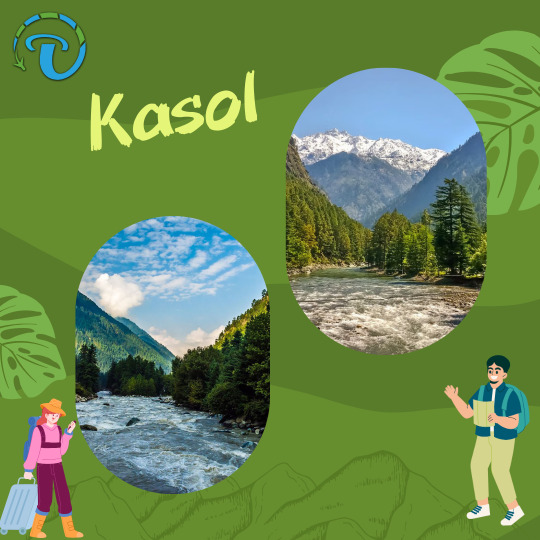
#solo trip kasol#kasol trip#kasol from manali#kullu manali kasol#manali to kasol#kasol trip package#kasol tour package#kasol package tour#kasol tourism packages#kasol manali#kasol tour#manali kasol tour package#kasol to dharamsala#trip counselors#easy trip planners#vacation planner#plan my trip#travel plan#solo trip#trip planner#tour planner#itinerary planner#tour and travel#couple tour#travel with friends
0 notes
Text
Bird watching around kathmandu valley
Embarking on a bird watching tour in the Kathmandu Valley unveils a rich tapestry of avian life against the backdrop of stunning landscapes and cultural heritage. Beginning at Phulchoki Hill, the highest peak in the valley, bird enthusiasts are greeted with a diverse array of species amidst lush forests and rhododendron blooms.
A unique chance to see resident and migratory birds in oak and pine forests can be had by climbing to Sivapuri Hill, a protected watershed region. Species like the Himalayan Monal, Rufous-bellied Woodpecker, and the rare Spiny Babbler can be peacefully observed in the beautiful surroundings.
The journey continues to Tokha, a quaint village nestled in the valley's outskirts. Here, birders can explore agricultural fields and forested patches, encountering species such as the Black-winged Cuckooshrike and White-capped Water Redstart.
Venturing to Bosan Danda, a ridge overlooking the valley, unveils panoramic vistas and a wealth of birdlife. Species like the Crested Serpent Eagle and Himalayan Swiftlet soar gracefully against the backdrop of terraced fields and distant mountains.
The tour then leads to Taoudaha, a serene lake surrounded by marshlands and reed beds. This wetland habitat attracts a myriad of bird species, including the Great Egret, Cinnamon Bittern, and Pied Kingfisher, offering ample opportunities for observation and photography.
Raibari, a tranquil forested area, provides a haven for birdwatchers seeking elusive species such as the Collared Owlet and Yellow-browed Warbler. The dense foliage and peaceful ambiance enhance the sense of immersion in nature's wonders.
Continuing to Sakhu, a traditional Newari settlement, bird enthusiasts can explore ancient temples and alleyways while keeping an eye out for species like the Chestnut-headed Bee-eater and White-browed Bush Robin amidst urban green spaces.
Inchangu, a pristine village surrounded by terraced fields and forests, offers a glimpse into rural life while providing excellent birding opportunities. Species like the Eurasian Jay and Black Bulbul can be spotted amidst the tranquil surroundings.
Join the Highland Eco Trek with expert guides provide valuable insights into bird behavior, ecology, and conservation efforts in the Kathmandu Valley. Whether novice or seasoned birder, this immersive journey promises unforgettable encounters with the avian treasures of Nepal's capital region, leaving lasting memories of nature's beauty and biodiversity.
1 note
·
View note
Text
Remote Treks of Nepal
Discover Nepal's Hidden Treasures
Nestled amidst the towering peaks of the Himalayas lie some of Nepal's best-kept secrets, waiting to be explored by adventurous souls seeking a truly remote and pristine trekking experience. While Everest Base Camp and the Annapurna region attract a multitude of travelers, there are lesser-known destinations that offer equally breathtaking landscapes and cultural richness without the crowds.
As Nepal gears up to boost tourism, aiming to welcome two million travelers, the spotlight shines on these hidden gems that promise an authentic and immersive trekking adventure. With Everest and Annapurna expected to draw large crowds, we invite you to venture off the beaten path and discover seven remote trekking destinations that offer solitude, stunning scenery, and cultural encounters unlike any other.
1. Manaslu Circuit Trek
Escape the crowds and embark on the Manaslu Circuit Trek, where fewer trekkers traverse the spectacular landscapes adorned with the majestic Mount Manaslu and the Ganesh Himal Range. Immerse yourself in the rich tapestry of Hindu and Tibetan Buddhist villages as you follow the Budhi Gandaki River, from lush forests to high-altitude glaciers.
2. Upper Dolpo Region and Phoksundo
Journey through the remote highlands of Dolpo, where the landscape transitions from verdant pastures to rugged Tibetan plateau, culminating in the mesmerizing Phoksundo Lake. Encounter authentic Tibetan villages and immerse yourself in the ancient traditions that thrive in this secluded region.
3. Lapchi Kang Trek
Embark on a transformative journey through the Lapchi Kang region, following in the footsteps of the legendary Tibetan saint, Milarepa. Trekking amidst the towering peaks and pristine landscapes, you'll immerse yourself in solitude and serenity, connecting with the spiritual essence of the Himalayas. As you traverse remote trails and visit ancient monasteries, you'll experience a profound sense of reverence and contemplation, gaining insight into both yourself and the natural world. Join us at Himalayan Ecological Trekking for an unforgettable adventure that combines physical challenge with spiritual awakening, guided by the legacy of Milarepa.
4. Upper Mustang Trek
Step back in time as you explore the ancient Buddhist kingdom of Mustang, nestled in the rain shadow of the Dhaulagiri massif. Marvel at the rugged terrain adorned with whitewashed villages and vibrant prayer flags, immersing yourself in a culture steeped in Tibetan heritage.
5. Langtang Trekking
Embark on a journey through the Langtang Valley, where dense forests give way to panoramic views of snow-capped peaks. Discover the resurrected village of Langtang and immerse yourself in the Sherpa and Tamang-Tibetan culture that thrives in this pristine wilderness.
6. Kanchenjunga Trek
Experience the raw beauty of Kanchenjunga, where towering peaks and emerald valleys await the intrepid explorer. Trek through remote landscapes adorned with the best views of Mt. Kanchenjunga and immerse yourself in the rich cultural tapestry of the region.
7. Tsum Valley Trek
Uncover the hidden treasures of Tsum Valley, a sacred pilgrimage site nestled in the northern reaches of Gorkha. Traverse ancient trails adorned with ornate chortens and immerse yourself in the unique culture and traditions of the Tibetan-influenced villages.
At Himalayan Ecological Trekking, we specialize in organizing immersive trekking adventures to these pristine destinations. If you seek solitude, breathtaking landscapes, and authentic cultural experiences, look no further than these remote treasures of Nepal. Contact us today to embark on the adventure of a lifetime.
For more information on these trekking tours, please visit our website or email us at [insert email address]. Dare to explore, challenge yourself, and write your own adventure story amidst the breathtaking beauty of Nepal's hidden treasures.
1 note
·
View note
Text
Bhutan's Chele La Pass: A Secret Natural Paradise

The captivating Chele La Pass, a natural wonder known for its spectacular beauty and serene atmosphere, is located in the center of Bhutan. Situated at a height of more than 3,900 meters, this pass affords spectators expansive views of the Himalayan peaks, including Jhomolhari and Jichu Drake. A visit to this pass will add value to your schedule for Bhutan. Chele La Pass has become a refuge for nature enthusiasts and photographers due to its beautiful backdrop of snow-capped mountains against an azure sky. This pass is a component of Bhutan's hill stations.
Getting to know Bhutan's Chele La Pass intimately
The rich biodiversity of Chele La Pass, Bhutan, is one of its main draws. Rare alpine flowers, vivid rhododendron woods, and secretive Himalayan animals like the Himalayan black bear and red panda are just a few of the region's many natural treasures. This abundant biodiversity adds to the allure of the pass by providing tourists with a singular opportunity to fully experience Bhutan's natural heritage and appreciate its ecological significance.
In addition to its natural beauty, the people of Bhutan attach great cultural and spiritual value to Chele La Pass, as they do to other passes in the country like Dochula Pass. Bhutan’s deeply rooted Buddhist rituals are reflected in the hallowed air of the pass, which is adorned with colorful prayer flags, Buddhist shrines called chortens, and sacred stones.
For thrill-seekers, Chele La Pass presents thrilling opportunities for trekking in Bhutan and exploration. The nearby paths allow hikers to go on amazing adventures amid Bhutan's untamed landscapes as they wind through pristine valleys, isolated lakes, and isolated communities.
Hiking the trails around Chele La Pass allows travelers to experience Bhutan's untamed splendor, whether they go it alone or take a guided tour. Essentially, Bhutan's Chele La Pass is a monument of the country's rich cultural heritage and stunning natural surroundings.
Its expansive views, wide variety of wildlife, and serene atmosphere attract tourists hoping to experience the allure of Bhutan's highlands for themselves. Whether you choose to meditate amidst flying prayer flags or take in the snow-dusted peaks, Chele La Pass offers a rewarding exploration of Bhutan's breathtaking landscape.
Which Period Is Ideal for Traveling to Chele La Pass?

Your own choices and the type of experience you're looking for will ultimately determine the best time to explore Chele La Pass in Bhutan.
Many travelers like the springtime (March to May) season because of the beautiful weather, which is marked by clear skies and comfortable temperatures. During this season, the valleys and meadows are adorned with vibrant flowers that blossom, creating a magnificent image that makes the environment come to life. It's a great time to go trekking and take in the breathtaking scenery of Chele La Pass without having to brave bitter cold or a lot of precipitation.
Another exceptional time to visit Chele La Pass is during the fall, which runs from September to November. With low temperatures and excellent visibility, the weather is still lovely and the pass offers stunning panoramic views of the Himalayas. Autumn also brings with it Bhutan's traditional festivals, such as Thimphu Tshechu, which offer cultural events in addition to the breathtaking scenery.
For those who enjoy winter scenery, winter (December to February) may still be enthralling despite the lower temperatures and sporadic precipitation. The breathtaking backdrop of the snow-capped mountains is enhanced by the fresh winter air, which gives the scene an air of magic. But, it's best to be ready for the cold and keep an eye on the state of the roads because significant snowfall may make travel more difficult.
CONCLUSION
In conclusion, Chele La Pass shows itself to be a secret treasure tucked away in Bhutan's pristine landscapes, providing a peaceful haven of natural beauty that is just waiting to be explored. The charm of Chele La Pass, a refuge for adventurers and environment lovers alike, becomes evident as we travel over its twisting roads and breathtaking views. Everything about this hidden paradise, from the colorful alpine flora to the snow-capped summits, evokes a captivating beauty that captivates the soul. Chele La Pass guarantees an amazing getaway into Bhutan's unspoiled environment, whether you're admiring the stunning scenery or taking in the peace of its environs.
0 notes
Text
Embracing Winter Wonderland: Snowfall in Gulmarg and Luxurious Accommodations

Gulmarg, often dubbed as the "Meadow of Flowers," transforms into a magical winter wonderland during the snowy season. Nestled in the Pir Panjal range of the Himalayas, Gulmarg is renowned for its pristine slopes and abundant snowfall, attracting winter sports enthusiasts and nature lovers from around the world. In this guide, we'll explore the enchanting snowfall in Gulmarg and highlight some of the finest hotels in Gulmarg where you can experience luxury amidst the snow-covered landscapes.
Snowfall in Gulmarg: A Skiing Paradise
Gulmarg receives heavy snowfall during the winter months, blanketing the region in a soft layer of powder snow and creating perfect conditions for skiing and snowboarding. With its gentle slopes for beginners and challenging terrain for experts, Gulmarg offers unparalleled opportunities for winter sports enthusiasts to indulge in their passion amidst breathtaking scenery. The Gulmarg Gondola, one of the highest cable cars in the world, provides access to some of the best skiing and snowboarding slopes, offering panoramic views of the surrounding mountains and valleys.

Hotels in Gulmarg: Where Luxury Meets Alpine Charm
After a day of exhilarating adventures on the slopes, unwind and rejuvenate at one of Gulmarg's top hotels, known for their impeccable hospitality and luxurious amenities:
The Khyber Himalayan Resort & Spa: Nestled amidst pine forests and snow-capped peaks, The Khyber Himalayan Resort & Spa offers a luxurious retreat in the heart of Gulmarg. Guests can enjoy opulent rooms, gourmet dining, and rejuvenating spa treatments amidst the breathtaking alpine scenery.
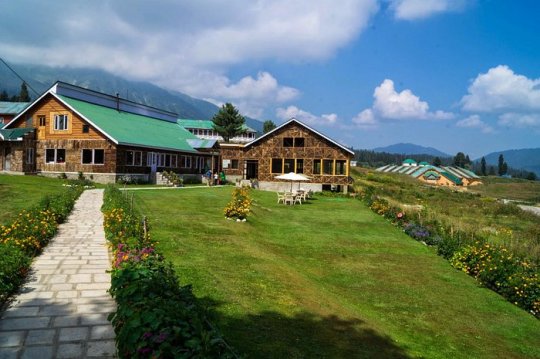
Hotel Highlands Park: Situated in the heart of Gulmarg, Hotel Highlands Park exudes old-world charm and elegance. Guests can relax in cozy rooms adorned with traditional Kashmiri décor, dine at the hotel's fine restaurants, and enjoy stunning views of the surrounding mountains from the comfort of their rooms.

Gulmarg Resort: Located near the Gulmarg Golf Course, Gulmarg Resort offers comfortable accommodations and warm hospitality amidst serene surroundings. Guests can unwind in spacious rooms, savor delicious Kashmiri cuisine, and explore the nearby attractions with ease.
Conclusion: Embracing the Magic of Gulmarg
Gulmarg's snowy landscapes and luxurious accommodations offer the perfect blend of adventure and relaxation for winter enthusiasts. Whether you're carving through fresh powder on the slopes or unwinding in the comfort of a cozy hotel room, Gulmarg promises an unforgettable winter escape that will leave you enchanted and longing to return. So pack your bags, embrace the magic of Gulmarg, and immerse yourself in the beauty of this snowy paradise.
0 notes
Text
Is Shillong the Ultimate Northeastern Gem?
Introduction:
Shillong, the capital of Meghalaya, beckons with an irresistible charm that has earned it the endearing moniker "Scotland of the East." This nickname transcends mere poetic fancy, serving as a testament to the uncanny parallels between Shillong's captivating landscapes and the picturesque beauty of the Scottish highlands. As we embark on a detailed exploration, prepare to be captivated by seven compelling reasons that weave a tapestry of similarities, illuminating why Shillong stands as a living homage to the breathtaking allure of Scotland. Join us on this virtual journey where the essence of Shillong's beauty intertwines seamlessly with the poetic landscapes of the Scottish realm.

Breathtaking Landscapes:
At the heart of Shillong's charm lies the remarkable resemblance between its landscapes and the undulating beauty of Scotland. The terrain, adorned with rolling hills that seem to stretch endlessly toward the sky, is blanketed in lush greenery. The picturesque pastures, especially on mist-laden days, create an ethereal atmosphere straight out of a romantic paradise. The striking parallels between Shillong and Scotland make it a delightful challenge to distinguish between photographs of the two regions, further cementing the well-deserved moniker.
Epic Road Trips:
For avid travelers, Shillong offers the perfect stage for the ultimate road trip experience. The meandering roads weaving through its valleys, whether on the way to Mawlynnong or navigating the captivating Shillong Bypass, beckon seasoned drivers seeking adventure. As you ride in the backseat, the wind tousling your hair, the Himalayan panorama unfolds, providing a mesmerizing backdrop to an unforgettable expedition through landscapes that echo the grandeur of the Scottish highlands. Consider utilizing car booking for outstation services to enhance your road trip experience.
Cultural Extravaganza:
Shillong's vibrant culture adds another layer to its comparison with Scotland. Similar to the Scottish people, the tribes of Shillong take immense pride in showcasing folk performances. Visitors can be captivated by traditional music and dance, gaining a deeper insight into the local way of life. Choosing to stay in homestays enhances the cultural immersion, offering an authentic connection complete with handicrafts, tribal attire, and time-honored traditions that echo the cultural richness of Scotland. While exploring, consider the convenience of a one-way taxi service for seamless travel between cultural attractions.
Enchanting Waterfalls:
Glistening waterfalls adorn both the Scottish Highlands and the hills of Shillong, contributing to the magical allure of their landscapes. Exploring the valleys, especially during the monsoon season, promises encounters with these natural wonders, adding to the awe-inspiring beauty that draws parallels between the two regions. The rhythmic cascade of water resonates with the enchanting charm that defines both Shillong and Scotland. Consider pre-arranging transportation through car booking for outstation to facilitate easy access to these mesmerizing waterfall locations.
Mirror-like Lakes:
Shillong and Scotland share waterfalls and serene lakes that mirror the surrounding rolling hills. Taking a moment to sit by these tranquil lakes or embark on a boat ride allows visitors to fully immerse themselves in the enchantment. The striking resemblance might momentarily make you forget which side of the globe you're on as you absorb the natural beauty unfolding before your eyes, mirroring the serene lakes that grace the Scottish highlands. Utilize the best outstation cab service for a comfortable journey to these reflective lakeside destinations.
Tranquil Escapes from Tourist Crowds:
Despite being a prominent tourist destination in Northeast India, Shillong successfully maintains a commendable balance between popular attractions and untouched regions. Numerous spots in the area allow visitors to pitch their tents, providing an unparalleled opportunity to connect with nature away from the hustle and bustle. The serene natural beauty of these secluded spots adds an extra layer to Shillong's allure, offering a sense of tranquillity reminiscent of the unexplored corners of the Scottish highlands. Opt for the best one-way taxi to reach these off-the-beaten-path locations with ease.
Hypnotic Music Festivals:
Shillong's music festival scene stands tall alongside its Scottish counterpart, captivating music enthusiasts with events like the NH7 Weekender. This celebrated festival, among India's most anticipated events, features performances by renowned artists such as A.R Rahman, Steven Wilson, Farhan Akhtar, and Fear Factory. The electrifying atmosphere and the stunning backdrop of Shillong add a unique dimension to the music festival experience, mirroring the vibrant spirit of Scotland's music festivals. Enhance your festival experience by utilizing a convenient one-side taxi service for hassle-free transportation.
Conclusion:
In conclusion, Shillong, aptly referred to as the "Scotland of the East," offers more than a picturesque landscape; it encapsulates a captivating fusion of nature, culture, and charm that mirrors the allure of its Scottish counterpart. As travelers embark on a journey through Shillong, they are greeted by the harmonious convergence of bagpipe echoes and indigenous melodies, creating a symphony that resonates with the region's rich cultural tapestry. The mist-laden hills not only paint a stunning visual panorama but also evoke the very spirit of the Scottish Highlands, establishing a unique and enchanting destination in the heart of the East. Shillong beckons adventurers to immerse themselves in its breathtaking beauty, where every step reveals a new chapter in a story that seamlessly intertwines the mystique of Scotland with the soul-stirring essence of the East. Consider the convenience of booking a taxi for an outstation or booking an outstation cab online with Map My Destination for a smooth and enjoyable exploration of Shillong's wonders.
#taxi service#travel#tourism#travel destinations#vacation#cab#holidaypackages#out station cab service#taxi#tour#shillong
0 notes
Text
Unlocking Leh Ladakh: A Journey Through Timeless Landscapes
Nestled amidst the majestic Himalayas, Leh Ladakh stands as a testament to nature’s grandeur and human resilience. With its awe-inspiring landscapes, rich cultural heritage, and adventurous spirit, this remote region in northern India beckons travelers seeking an escape into the heart of untouched beauty. From serene monasteries perched on rocky cliffs to pristine lakes reflecting the azure sky, there are many things to do in Leh Ladakh and it offers an unforgettable experience for those willing to embark on a journey off the beaten path through its amazing places to visit.

Exploring Leh: A Glimpse into Ancient Traditions
Leh Palace: Rising like a silent sentinel above the town of Leh, the Leh Palace transports visitors back in time to the era of Ladakh’s royal heritage. Built in the 17th century by King Sengge Namgyal, this nine-story palace boasts stunning panoramic views of the surrounding landscape, making it a must-visit for history enthusiasts and photography aficionados alike.
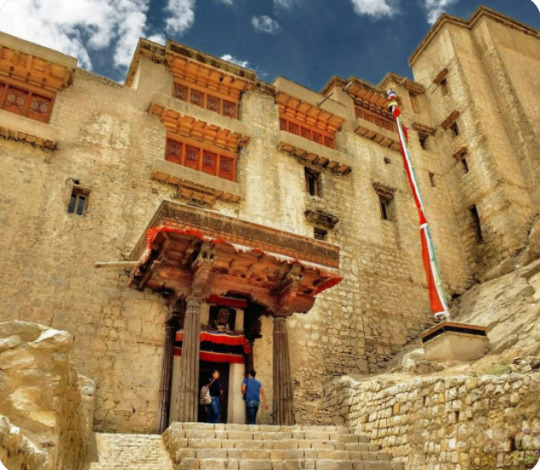
Shanti Stupa: Perched atop a hill overlooking Leh, the Shanti Stupa is a symbol of peace and harmony. Built by Japanese monks to commemorate 2500 years of Buddhism, this gleaming white stupa offers a tranquil retreat where visitors can meditate and soak in the serene atmosphere while enjoying breathtaking vistas of the town below.

Leh Market: Immerse yourself in the vibrant tapestry of Ladakhi culture at the bustling Leh Market. From intricately woven textiles to traditional handicrafts, this lively bazaar offers a treasure trove of souvenirs and keepsakes to commemorate your journey through the Himalayan highlands.

Embracing Nature’s Splendor: Must-See Natural Wonders
Pangong Lake: Prepare to be mesmerized by the ethereal beauty of Pangong Lake, whose shimmering turquoise waters stretch as far as the eye can see. Located at an altitude of over 14,000 feet, this iconic lake is best known for its ever-changing hues and dramatic mountain backdrop, making it a favorite destination for photographers and nature enthusiasts.
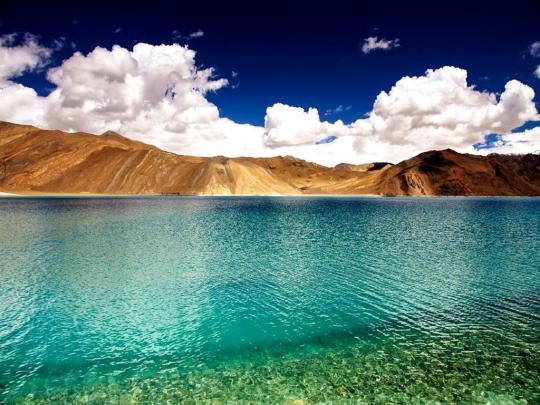
Nubra Valley: Embark on an unforgettable adventure to the enchanting Nubra Valley, a hidden oasis nestled amidst towering sand dunes and snow-capped peaks. Traverse the world’s highest motorable pass, Khardung La, and descend into this picturesque valley dotted with quaint villages, lush orchards, and the mystical Diskit Monastery, home to a towering statue of Maitreya Buddha.

Tso Moriri: Escape the crowds and immerse yourself in the pristine wilderness of Tso Moriri, a high-altitude lake located in the remote Changthang region of Ladakh. Surrounded by rugged mountains and vast grasslands, this serene lake is a haven for birdwatchers and wildlife enthusiasts, offering a rare glimpse of the elusive Tibetan wild ass and other native species.
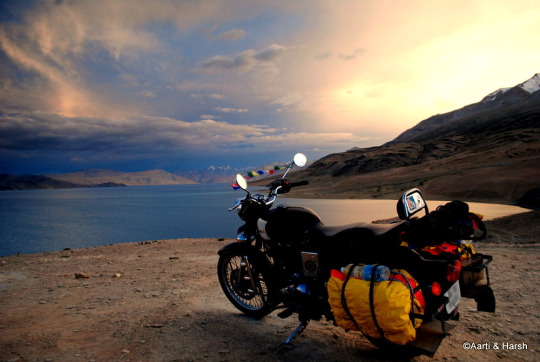
Adventure Awaits: Thrilling Activities for the Brave at Heart
Trekking: Lace up your hiking boots and embark on an epic trek through Ladakh’s rugged terrain. Whether you’re a seasoned mountaineer or a novice adventurer, there are trails to suit every skill level, from the classic Markha Valley trek to the challenging Stok Kangri summit expedition.

White Water Rafting: Feel the adrenaline rush as you navigate the frothy rapids of the mighty Zanskar River on a white water rafting expedition. With its pristine waters and breathtaking scenery, Ladakh offers some of the most exhilarating rafting experiences in the world, including the famous Zanskar River Chadar Trek during the winter months.
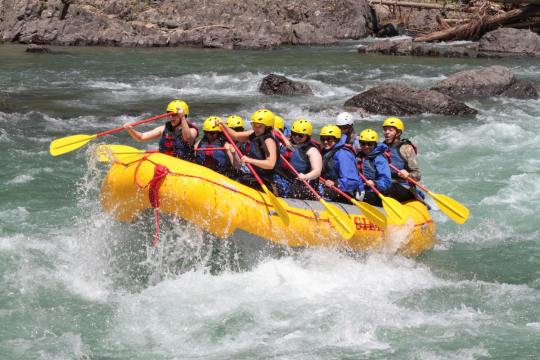
Motorcycle Tours: Channel your inner explorer and hit the open road on a thrilling motorcycle tour through the rugged landscapes of Ladakh. With its winding mountain passes, steep gorges, and stunning vistas, the region offers an unparalleled adventure for riders seeking the ultimate freedom of the open highway.
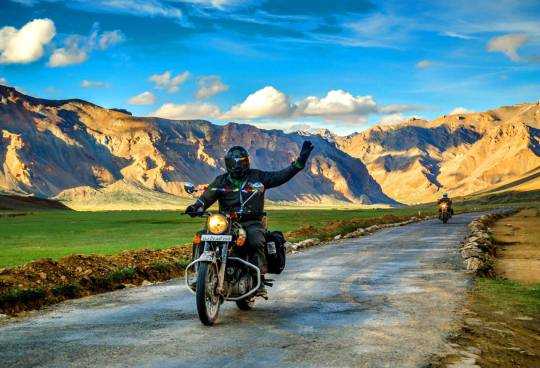
Immersing in Spiritual Serenity: Monasteries and Meditation Retreats
Thiksey Monastery: Perched on a hilltop overlooking the Indus Valley, the Thiksey Monastery is a sprawling complex of whitewashed buildings adorned with colorful murals and prayer flags. Explore its labyrinthine corridors, visit the ancient temples and meditation halls, and witness the monks’ daily rituals as they chant prayers and perform sacred ceremonies.

Hemis Monastery: Delve into the mystical realm of Tibetan Buddhism at Hemis Monastery, one of the largest and wealthiest monasteries in Ladakh. Founded in the 17th century, this ancient monastery is famous for its annual Hemis Festival, where monks perform sacred masked dances to commemorate the birth anniversary of Guru Padmasambhava.

Meditation Retreats: Unplug from the distractions of modern life and embark on a journey of self-discovery at one of Ladakh’s many meditation retreats. Whether you’re a seasoned practitioner or a curious beginner, these tranquil sanctuaries offer the perfect opportunity to rejuvenate your mind, body, and spirit amidst the pristine beauty of the Himalayas.
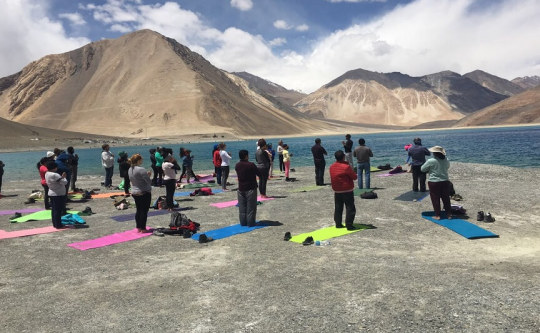
Practical Tips for Travelers:
Altitude Acclimatization: Due to its high altitude, Leh Ladakh presents a risk of altitude sickness for unprepared travelers. It’s essential to acclimatize gradually by spending a few days in Leh before venturing into higher altitudes.
Pack Wisely: Be sure to pack appropriate clothing for the unpredictable weather conditions in Ladakh, including warm layers, sturdy hiking boots, and plenty of sunscreen and hydration.
Respect Local Customs: When visiting monasteries and other religious sites, remember to dress modestly and observe the customs and traditions of the local community.
Stay Hydrated: The dry mountain air can lead to dehydration, so be sure to drink plenty of water throughout your stay in Ladakh to stay hydrated and healthy.

In conclusion, Leh Ladakh offers a truly immersive and transformative travel experience for adventurers, nature lovers, and spiritual seekers alike. With its breathtaking landscapes, rich cultural heritage, and boundless opportunities for exploration and adventure, this remote corner of the world beckons intrepid travelers to unlock its mystique and discover the magic of the Himalayas.
0 notes
Text
Mukteshwar Magic: Experiencing Exceptional Hospitality in Resorts By The Baagh

Mukteshwar is one of those destinations in the Northern part of India that never fails to amaze. Located in the charming state of Uttarakhand, the destination has been one of the favorite among travellers who are looking for a quick weekend getaway or a corporate offiste travel. Amidst all these landscape views, flora and fauna, rustling leaves, and much more, Resorts by the Baagh has mindfully created a haven for visitors who like it all serene and luxurious. Resorts by the Baagh has created a villa which is one of the best Mukteshwar resorts with state-of-the-art amenities, cordial hospitality, and more. Let us check out what Resorts by the Baagh has to offer:
1. Beautiful Villa Away From the Hustles of Cityscapes: When you arrive at Resorts By The Baagh, you're met by a stunning house surrounded by lush nature. The serene ambience and breathtaking splendour immediately take you to a realm of peace and calmness. Away from the city's bustle and pollution, the villa offers a beautiful hideaway for guests to relax and reconnect with nature.
2. Majestic View of the Himalayan Valley: As the best villa in Mukteshwar, you will be experiencing one of the most beautiful views of the majestic Himalayan valley, allowing guests to appreciate nature's magnificent splendour. Whether you're sipping your morning coffee or relaxing after a day of exploring, the panoramic view will captivate you. The towering hills, grassy valleys, and brilliant blue skies provide a stunning backdrop for your visit.
3. Sun-Kissed Cliffs: Resorts by the Baagh, located on sun-kissed cliffs, gives the ideal vantage point for basking in the warmth of the sun and enjoying the calm surroundings. The calm air and lovely chirping of birds create a symphony of peace that fills the entire property. Visitors can take in the natural beauty of their surroundings while also enjoying the calm and repose of the highlands.
4. Plush Bedding and State-of-the-Art Furnishings: Stepping into the villa, you'll be greeted by sumptuous bedding and modern furniture that exude elegance and comfort. Every corner of the villa has been thoughtfully crafted to provide visitors with the ultimate in leisure and luxury. From cosy bedrooms to vast living areas, the villa is a haven of comfort where guests can relax and rejuvenate.
5. Finest Dining and Recreation Amenities: At Resorts by the Baagh, you may treat your taste buds to the best dining experiences. Every meal is a gourmet treat, from delectable local dishes to exotic international cuisines. In addition, guests can participate in a variety of recreational activities, such as indoor games, nature excursions, and yoga sessions. Whether you desire action or relaxation, the villa has something for everyone.
6. Excellent Nature Walks: Resorts By The Baagh provides guided nature walks that allow you to explore the natural forest surrounding the villa. Immerse yourself in nature's beauty as you travel through lush forests, meandering pathways, and flowing streams. The skilled guides will help you find the region's hidden beauties while also providing fascinating insights into the local flora and animals.
7. Barbeque and Grill House: Relax under the starry night sky in the best villa in Mukteshwar while enjoying a scrumptious BBQ feast at the villa's barbeque and grill house. The roaring bonfire and tantalising scents create the ideal setting for a special dining experience with loved ones. Whether it's a romantic evening for two or a lively gathering with friends and family, the barbeque and grill house provides an amazing atmosphere.
0 notes
Text
Unlock the Magic: Discover the Top Places to Visit in East India with Geniefie

Discover East India, a region rich in cultural diversity, historical significance, and breathtaking landscapes, beckons travelers seeking an authentic and immersive experience. From the vibrant streets of Kolkata to the tranquil shores of the Bay of Bengal, East India has something for every type of explorer. In this blog, we’ll unveil the top places to visit in East India and how you can elevate your travel experience with the magic of Geniefie.
Gangtok – Sikkim’s Enchanting Retreat
Weather: 4 – 13°C
Ideal duration: 2-4 days
Best Time: Throughout the year
Perched at 1650 meters above sea level, Gangtok, the capital of Sikkim, is a captivating hill station with stunning views of Mt. Kanchenjunga. A haven for adventure seekers, it offers popular treks like Dzongri and Varsey, as well as paragliding and mountain biking. From March to mid-May, the hills burst into colors with blooming Rhododendrons.
Gangtok’s lively MG Road boasts trendy restaurants and pubs open until 11 p.m., making it perfect for nightlife enthusiasts. The city is a shopper’s delight, offering Tibetan handicrafts and more. Explore natural wonders like Tsomgo Lake and Ban Jhakri falls, or visit religious sites like Enchey Monastery. For adrenaline junkies, white-water rafting on the Teesta River is a must.
With its perfect blend of cultural charm and urban comforts, Gangtok caters to all – whether you seek family fun, a romantic getaway, adventure, or a peaceful retreat in nature. Discover the magic of Gangtok, the gateway to Sikkim.
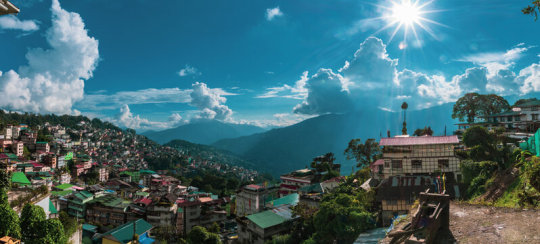
Shillong – Meghalaya’s Highland Gem
Weather: 5 – 17°C
Ideal duration: 2-4 days
Best Time: September – May
Nestled at 1496 meters, Shillong, Meghalaya’s capital, is a picturesque haven earning the moniker ‘Scotland of the East.’ Diverse tribal communities add vibrancy to its cultural mosaic. Umiam Lake and Elephant Falls offer serene escapes, while Laitlum Canyons beckon trekking enthusiasts.
Cultural gems like the Don Bosco Museum and Meghalaya State Museum showcase indigenous heritage. The lively Police Bazar is a hub of diverse shopping experiences.
Venture to Mawphlang for cultural richness and Mawlynnong, Asia’s cleanest village, for pristine landscapes. Shillong, the “music capital of India,” resonates with a dynamic music scene, celebrating its westernized culture and youthful vibe. Discover Shillong’s scenic wonders and cultural richness in a nutshell.

Darjeeling – Jewel of the Himalayas
Weather: 1 – 12°C
Ideal duration: 2-3 days
Best Time: February-March, September-December
Once the summer capital of British India, Darjeeling has blossomed into one of the country’s most coveted hill stations. Nestled at 2,050 meters above sea level amidst sprawling tea estates, this West Bengal gem offers a romantic haven with a consistently cool climate.
The iconic Darjeeling Himalayan Railway, granted UNESCO World Heritage status since its establishment in 1881, weaves through the hills, providing breathtaking mountain views. Renowned for its 86 tea estates producing the globally acclaimed ‘Darjeeling Tea,’ the town is a haven for tea enthusiasts.
Dominating the skyline is the Kanchenjunga, the third-highest peak globally and the loftiest in India. Its panoramic view is a visual feast for visitors. Darjeeling boasts a rich tapestry of attractions, including monasteries, botanical gardens, a zoo, and the Darjeeling-Rangeet Valley Passenger Ropeway, the longest cable car in Asia. For an awe-inspiring sunrise, Tiger Hill stands as an unrivaled vantage point.
Darjeeling, the ‘Jewel of the Himalayas,’ beckons with its historic charm, lush landscapes, and cultural treasures, making it an irresistible destination for all seasons.

Ziro Tourism
Weather: 1 – 9°C
Ideal duration: 2 days
Best Time: Throughout the year
The cradle to a unique tribal group and a balmy climate, Ziro is the peace seeker’s paradise. Ziro is a quaint old town in Arunachal Pradesh, home to the Apa Tani tribe and famous for its pine hills and rice fields.
Ziro is a quaint old town in Arunachal Pradesh, home to the Apa Tani tribe and famous for its pine hills and rice fields. The climate in Ziro is mild through the year, making it comfortable to travel all year round.
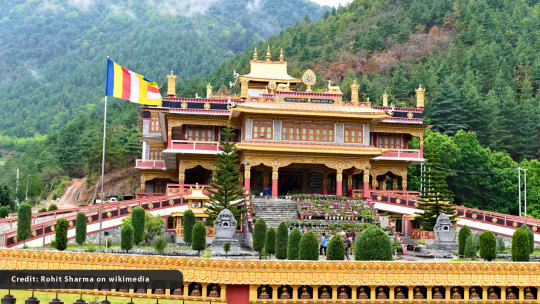
Majuli Tourism- “World’s Largest Fresh Water Island”
Weather: 12 – 22°C
Ideal duration: 1-2 days
Best Time: Jul-Mar
Majuli is a lush green environment-friendly, a pristine and pollution-free freshwater island in the river Brahmaputra, just 20 km from the Jorhat city and located 347 Kms from Guwahati. With a total area of 1250 sq. km, Majuli is the world’s largest river island and it attracts tourists from all over the world. Among one of the most surreal places in India, Majuli is also a strong contender for a place in UNESCO’s World Heritage Sites. Mostly inhabited by Tribals, the culture of Majuli is unique and quite interesting and is one of the key reasons why people love this place so much. It is also called the cultural capital of Assam. The festivals celebrated here are all joyous and vibrant. The main festival in the town of Majuli is called Raas and it is an exciting and interesting spectacle.
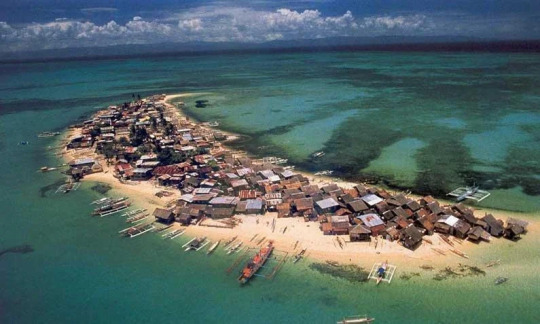
Bodh Gaya – Where Buddha’s Enlightenment Blooms
Weather: 11 – 25°C
Ideal duration: 1-3 days
Best Time: Oct-Mar
Nestled in Bihar’s Gaya District, Bodh Gaya stands as a sacred Buddhist pilgrimage site, renowned for the Mahabodhi Temple. This hallowed ground marks the very spot beneath the Bodhi tree where Gautama Buddha attained enlightenment, a spiritual milestone echoing through the ages.
Now honored as a UNESCO World Heritage Site, Bodh Gaya has received support from various countries, including Japan and China, aiding in the development of facilities for Buddhist pilgrims. Throughout the year, the air is filled with the hum of pilgrims, both from India and abroad, drawn to the monasteries, temples, and the remnants of the sacred Bodhi Tree to offer their homage.
Situated by the Neranjana River, Bodh Gaya carried different names in the past, including Uruwela, Sambodhi, Vajrasana, or Mahabodhi until the 18th century CE. It is one of the four pivotal Buddhist sites, alongside Kushinagar, Lumbini, and Sarnath, each holding a unique significance in the journey of Buddha’s teachings.
Bodh Gaya, where Buddha’s enlightenment bloomed, continues to be a spiritual haven, welcoming seekers and pilgrims from around the world to experience the profound serenity of this sacred land.

Konark – Home to the Sun Temple and Cultural Extravaganza
Weather: 21 – 28°C
Ideal duration: 1 day
Best Time: Sep-Mar
Nestled in the state of Odisha, Konark is globally renowned for its Sun Temple, a UNESCO World Heritage Site, the vibrant Annual Dance Festival, and its pristine sandy beaches.
The Sun Temple in Konark stands as a testament to architectural brilliance, ranking among the most exquisite monuments in India. The Annual Dance Festival, spanning five days, transforms Konark into a cultural hub, drawing talented dancers from across the nation. Against the backdrop of the Sun Temple, this festival becomes a grand celebration of India’s rich cultural and artistic heritage, showcasing diverse dance forms that have flourished in the country. Additionally, Konark hosts the Sun Festival, where devotees offer prayers to the Sun God by taking dips in the sea.
Adding to the cultural allure, the Dance Festival features a Handicrafts Mela, allowing visitors to acquire uniquely handcrafted pieces that beautifully reflect the rich Oriya art form. With its majestic Sun Temple, cultural celebrations, and sandy beaches, Konark beckons travelers to immerse themselves in its architectural marvels and vibrant traditions.

Unveiling East India’s Wonders with Geniefie
In the tapestry of East India’s diverse destinations, Geniefie trip planner emerges as your magical travel companion. From personalized itineraries to exclusive deals, Geniefie seamlessly blends technology with the rich cultural experiences of the region.
As you explore bustling markets, trek through the Himalayas, or immerse yourself in vibrant local music scenes, Geniefie stands by you, turning every travel wish into a reality. May your journeys in East India be filled with awe, discovery, and the enchantment that only Geniefie can unveil. Happy travels, and let the magic continue!
Geniefie Trip Planner
Android
IOS
0 notes
Text
Himalayan Highlands: Must-Visit Places in Himachal Pradesh
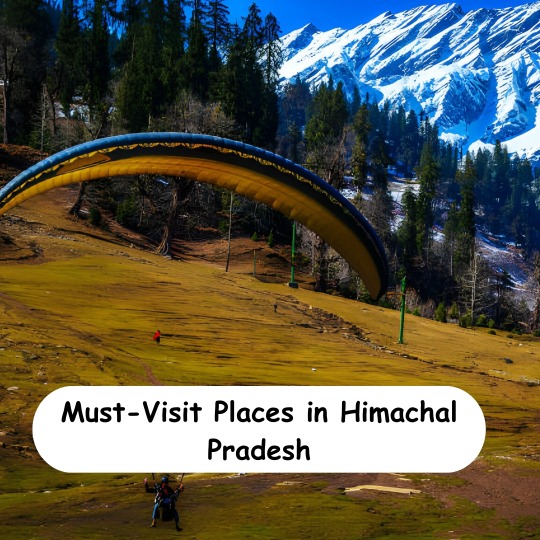
Welcome to the mesmerizing tour of must visit places in Himachal Pradesh, where every valley echoes with the enchanting allure of nature and culture. Himachal tourism, with its diverse offerings, beckons adventure enthusiasts, nature lovers, and culture seekers alike. This northern gem, cradled in the arms of the Himalayas, boasts an array of must-visit places in Himachal Pradesh that promise an unforgettable experience. Let Himalayan Heaven Tours guide you to must-visit places, including Shimla, Manali, Dharamshala, and Chamba – each a unique gem waiting to be explored. Follow the call of the mountains, as you discover the natural wonders that make Himachal Pradesh a destination like no other. Join us on a virtual journey through the scenic landscapes, ancient temples, and vibrant traditions that make Himachal Pradesh a must-visit destination for everyone.
Adventure Paradise:
For adventure enthusiasts, Himachal Pradesh is a playground. From trekking in the Parvati Valley to river rafting in the Beas River, the options are endless. The Rohtang Pass and Sach Pass are a heaven for bikers and road trip enthusiasts, offering breathtaking views along challenging terrains. Skiing in Solang Valley and paragliding in Bir Billing are experiences that promise an adrenaline rush amidst the pristine Himalayan landscape.
Spiritual Retreats:
The land of gods, as Himachal is often referred to, is dotted with temples and monasteries that hold immense spiritual significance. The Hidimba Devi Temple in Manali, the Baijnath Temple in Kangra, and the Key Monastery in Spiti are just a few examples. These sacred sites not only offer a glimpse into the rich cultural heritage of the region but also provide a serene escape for those seeking spiritual solace.
In this article you will get to know about some of the heavenly must visit places in Himachal Pradesh:-
Shimla - The Queen of Hills:
Start your journey to Himachal Pradesh from the charming capital city, Shimla. The Ridge, Mall Road, and Jhaku Temple for a taste of the town's rich history and culture. The toy train journey from Kalka to Shimla is a UNESCO World Heritage experience, offering stunning vistas of lush green landscapes. Avoid planning a visit during the winter months (December to February) if you are not a fan of cold weather, as Shimla experiences heavy snowfall during this period.
Manali - Adventure Heaven:
Manali, situated along the banks of the Beas River, is a heaven for adventure seekers. From skiing in Solang Valley to paragliding in Rohtang Pass, the options are limitless. The picturesque landscapes, lush apple orchards, and the ancient Hadimba Temple add to the charm. Don't miss a visit to Old Manali for its bohemian vibes and vibrant cafes. best time to visit Manali depends on your preferences and the kind of experience you desire. If you enjoy outdoor activities, summer is ideal, if you love snow and winter activities, the winter months are perfect. Always check the current weather conditions and road accessibility before planning your trip.
Dharamshala - The Spiritual Retreat:
Dharamshala, the spiritual headquarters of the Tibetan culture, is renowned for its peaceful atmosphere and the residence of the Dalai Lama. Explore McLeod Ganj, visit the Tsuglagkhang Complex, and trek to Triund for breathtaking views. The town's Tibetan influence adds a unique cultural touch to the experience. It's important to note that Dharamshala experiences heavy rainfall during the monsoon season (July to August), and winters (December to February) can be quite chilly, especially in higher elevations. If you prefer milder temperatures and want to enjoy the natural beauty of the region, plan your visit during the spring or autumn months.
Kullu - The Valley of Gods:
Known for its stunning landscapes and vibrant festivals, Kullu is a delightful destination. The Kullu Valley is dotted with apple orchards, traditional wooden houses, and ancient temples. The annual Kullu Dussehra is a grand celebration attracting visitors from far and wide. Winter months (December to February) can be quite chilly. While some visitors enjoy the snow-covered landscapes, others may find it too cold. If you're a fan of snow and winter sports, visiting during this time might be suitable for you.
Dalhousie - Serenity in the Himalayan Lap:
Tucked away in the Chamba district, Dalhousie a picturesque hill station, named after the British Governor-General Lord Dalhousie, offers a peaceful escape from the hustle and bustle of city life. Let's explore the enchanting allure of Dalhousie and the serene experiences it has to offer. The best time to visit Dalhousie is during the summer and early autumn months, spanning from March to October. During this period, the weather in Dalhousie is pleasant. The months of March to June are considered the peak tourist season, as the weather is mild, and the flora is in full bloom, creating a picturesque landscape.
Spiti Valley - A High-Altitude Adventure:
For those seeking offbeat destinations, Spiti Valley offers a unique experience. Known for its high mountain deserts, ancient monasteries, and challenging roads, Spiti is a heaven for adventure enthusiasts. Key Monastery, Chandratal Lake, and the village of Kibber are must-visit attractions. The best time to visit here depends on your preferences and the type of experience you seek. The most favorable time for most travelers is during the summer months, specifically from late May to early October.
If you are planning to visit Himachal Pradesh choose the time that aligns with your interests, whether it's the bustling summer months, the lush monsoon season, the vibrant autumn, or the tranquil winter solitude.
These are some of the must visit places in Himachal Pradesh. We will explore about other places very soon.
So, here is the virtual journey to must-visit places in Himachal Pradesh, a region blessed with breathtaking landscapes and vibrant culture. Journey through the mystical landscapes of Himachal Pradesh, where nature and culture converge in perfect harmony. With its diverse landscapes and rich cultural tapestry, stands as a testament to the incredible beauty that the Himalayas hold. Whether you're an adventure seeker, a nature lover, or someone seeking spiritual solace, Himachal has something to offer for everyone. Plan your Himachal tour, and let the magic of the mountains captivate your heart and soul.
Happy Journey!!
1 note
·
View note
Text
The Manaslu Circuit Trail, located in Nepal's Himalayas, is a popular trekking destination offering a unique journey through remote landscapes, charming villages, and breathtaking mountain vistas. The trail, spanning over 100 miles, encircles Mount Manaslu, the eighth highest peak in the world, and offers panoramic views of snow-capped peaks, cascading waterfalls, and serene glacial lakes. The trail also features traditional mountain villages inhabited by indigenous communities like the Gurungs, Tamangs, and Sherpas. Unlike the more crowded trails in the Everest and Annapurna regions, the Manaslu Circuit Trail offers a quieter, off-the-beaten-path experience, allowing trekkers to forge connections with fellow adventurers and local inhabitants. Despite challenges like rugged terrain and unpredictable weather, the rewards are immeasurable, including a profound sense of accomplishment and appreciation for nature.
0 notes